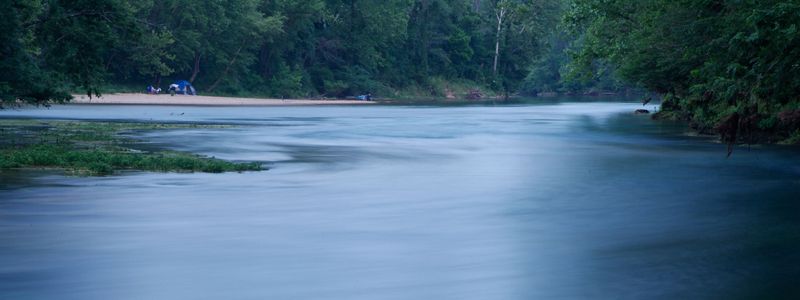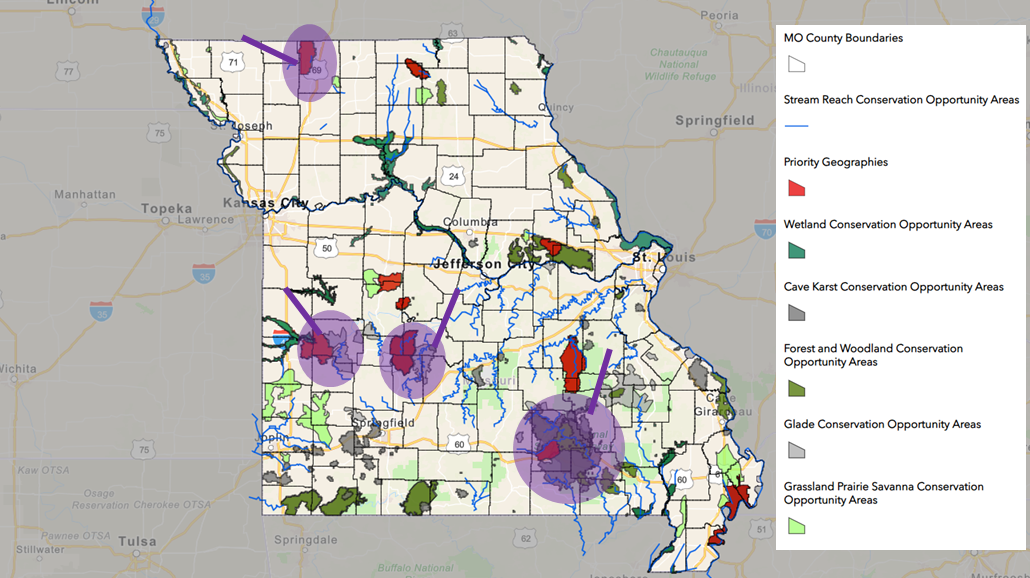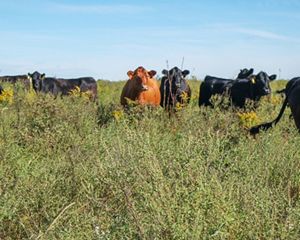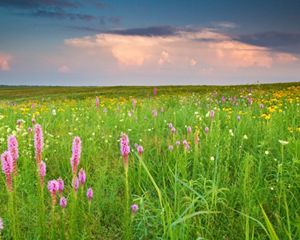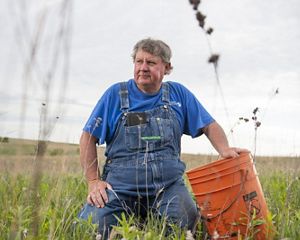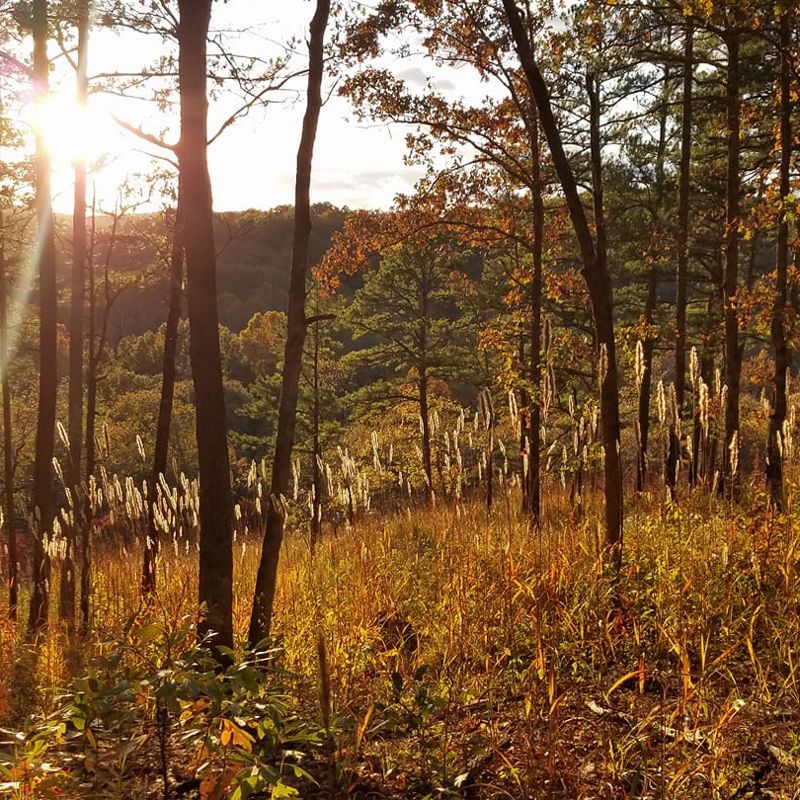
Protecting Missouri's Landscapes
Conserving key landscapes and building partnerships.
The Nature Conservancy took up the mission to conserve and protect Missouri’s vital landscapes more than 60 years ago. We work to boost biodiversity, repairing and nurturing the habitats that shelter native plants and wildlife. That has long included stewarding our own preserves across the state, but the mission extends beyond property lines. With our partners, we leverage our preserves to develop, test and demonstrate practices that are good for the land and that make good financial sense for landowners and communities.
Whether it’s helping ranchers implement sustainable grazing methods or teaming up with state fire crews on controlled burns, sustainable land management practices have a powerful impact. They can boost soil fertility, sequester carbon, conserve water and create habitat. We’re working with others to create solutions and put those solutions to work.
Explore Our Work in Land Protection
Habitat Strike Teams
Missouri's Habitat Strike Teams are on the front lines, using prescribed fire and other methods to combat invasive species and promote biodiversity.
Missouri Land Protection
Our work with individuals and partners has helped TNC protect more than 150,000 acres across the state.
Sustainable Agriculture
Working with Missouri farmers, we take a balanced approach to sustainable agriculture with a shared goal benefiting the land and their bottom line.
Bison Restoration
Learn about the iconic American bison and see what we’re doing to protect them.
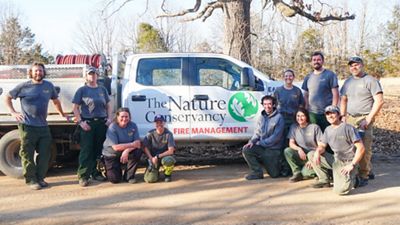
Statewide Prescribed Fire & Habitat Strike Teams
TNC is a world leader when it comes to using “good fire” to increase biodiversity and head off wildfires. Prescribed fire is an essential tool in conservation, one used by Indigenous peoples for thousands of years to care for natural habitats. It helps control invasive plants and clears excess dead leaves and brush that can fuel wildfires. We use fire on our properties, but TNC is also deeply involved in training and partnerships with other agencies to promote responsibly managed fires on public and private lands.
As part of our commitment to collaboration, we have developed a network of Habitat Strike Teams in Missouri. The small but efficient crews are staged in priority areas around the state, currently the Eastern Ozarks, Western Ozarks, Osage Grasslands and Grand River Grasslands.
Habitat Strike Team Regions
TNC has four Habitat Strike Teams in Missouri. The circles indicate where the teams assist with habitat management on private land. The teams expand beyond these ranges to assist conservation partners who are working on priority landscapes.
Map of Missouri’s Priority Geographies and Conservation Opportunity Areas collaboratively developed and maintained by the Missouri Department of Conservation.
Eastern Ozarks
The Eastern Ozarks region is home to numerous species found nowhere else on earth. This region is known for its many caves, springs and sinkholes, winding rivers and lush woodlands. TNC’s Habitat Strike Team collaborates with landowners and partners including the U.S. Forest Service to implement conservation measures that safeguard this critical habitat.
Primary habitat work: Woodland and glade management on public and private lands, using prescribed fire, timber understory treatments and invasive species treatments.
Species of concern:
Indiana bat
Hine’s emerald dragonfly
Ozark hellbender
Western Ozarks
The Western Ozarks region encompasses rolling hills, dense forests and clear streams and is known for its karst topography, featuring caves, sinkholes and underground rivers. TNC’s Habitat Strike Team works with private landowners and agencies to implement prescribed fire and treatments to keep invasive species at bay.
Primary Habitat Work: Woodland and glade management on public and private lands, using prescribed fire, timber understory treatments and invasive species treatments.
Species of concern:
Eastern hellbender
Bachman’s sparrow
Niangua darter
Osage Plains
The Osage Plains, located in the west-central part of Missouri, encompasses some of the most diverse native tallgrass prairies in the state and is extremely threatened by invasive species. TNC’s Habitat Strike Team works with private landowners and agencies to increase biodiversity supporting the plants and wildlife in the landscape.
Primary habitat work: Prairie management on public and private lands, using prescribed fire, invasive treatments, woody vegetation management and native seed harvest/planting.
Species of concern:
American burying beetle
Mead’s milkweed
Greater prairie-chicken
Grand River Grasslands
The Grand River Grasslands, spanning over 160,000 acres in Missouri and Iowa, is a critically endangered habitat. TNC's Habitat Strike Team collaborates with private landowners to focus on sustainable practices benefiting healthy prairies and working lands. They also collaborate with Drake University for grassland research and workforce development.
Primary Habitat Work: Prairie management on public and private lands, using prescribed fire, invasive treatments, woody vegetation management and native seed harvest/planting.
Species of concern:
Topeka shiner
Mead’s milkweed
Greater prairie-chicken
They increase the overall capacity for well-managed fires in Missouri, because their agility means they can plug in on prescribed burns with federal agencies, landowners and other conservation organizations in need of extra hands.
But the teams do more than fire. They work with partners to connect quality habitat, tackling the problem of invasive species that threaten native landscapes and contribute to the broader biodiversity crisis.

Land Protection
TNC has a long history of protecting land. The biodiverse Ozarks in particular have been a point of interest. In 2007, with the help of generous donors, TNC established the Ozarks Conservation Buyers Fund to protect vulnerable land around the Current and Jacks Fork rivers.
The fund allows TNC to buy properties and safeguard them with land protection agreements. The legal agreements have the power to ensure the quality of the water, trees and other critical natural features are sustained. TNC then resells the properties and returns the proceeds to the fund to buy more properties. Since it was created, the fund has helped protect more than 12,000 acres.
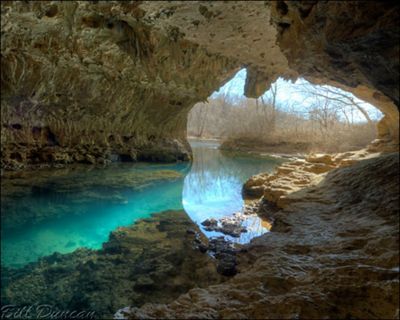
TNC has expanded those efforts beyond the Buyers Fund footprint to protect the karst systems in the Interior Highlands region, which extends across large swaths of Missouri, Arkansas and part of eastern Oklahoma. Karst systems are porous networks of caves, sinkholes and springs. They support some of the world’s most biodiverse places, including numerous species that live only in the Ozarks.
These areas are essential puzzle pieces in globally important ecosystems, and they’re under a lot of pressure. Our goal for land protection across the state is to ensure critical landscapes and habitats remain intact for future generations.
Sustainable Agriculture
A balanced approach to sustainable ag, benefiting the land and their farmers' bottom line.
Learn more about our work with farmersSustainable Agriculture: Increasing Native Forage
Privately owned forage crops, which are crops grown specifically to be grazed by livestock or for hay, cover 11 million acres across Missouri and contribute more than $12 billion annually to the state’s economy.
Historically, more than one-third of Missouri and much of the Great Plains was made up of tallgrass prairie, with a mix of native warm-season grasses like bluestem and switchgrass. Over time, nearly all the prairie was converted to tall fescue, a non-native, cool-season pasture grass.
Today, The Nature Conservancy works with partners and landowners to bring those native, warm-season grasses back to Missouri’s working lands. Along with providing habitat for many grassland birds, pollinators and other species who rely on this ecosystem to survive, native grasses benefit landowners and producers as well.
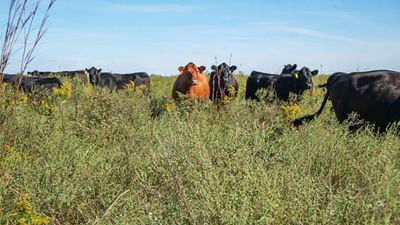
Native forage grows well in the summer when fescue tends to be challenging to keep active. This means increased weight gain for livestock.
Additionally, native grasses have deep, complex root systems that can stretch as deep as 15 feet below the surface. These roots stabilize soil, store carbon and absorb and hold rainwater, which can help in times of heavy rain or drought.
Demonstration projects at TNC’s Little Creek Farm and a grassbank, both located at our flagship Dunn Ranch Prairie preserve in northwest Missouri, showcase the benefits of native forage. Here, we test grazing practices that landowners and producers can replicate on their land.
We help connect landowners with cost-share programs and other incentive programs, such as the Climate-Resilient Crop and Livestock project that supports the adoption of climate-smart practices for Missouri producers.
Helping Missouri landowners convert pastures to native, warm-season grasses is a win for nature and can help increase producers' bottom line.
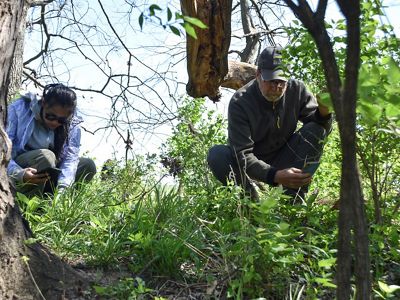
Centers for Conservation Innovation
For more than 70 years, TNC has developed best-in-class stewardship expertise from the lands and waters in our care. Our organization started as a land trust and that spirit remains in our DNA. TNC owns nearly 12,000 acres of land in Missouri and has helped protect more than 150,000 acres across the state.
Our preserves, some open to the public and others too delicate or remote to host visitors, represent a variety of ecosystems that make Missouri unique. Unsurprisingly, we are also big fans of science. The research and insights of scientists guide our efforts to develop the latest conservation strategies.
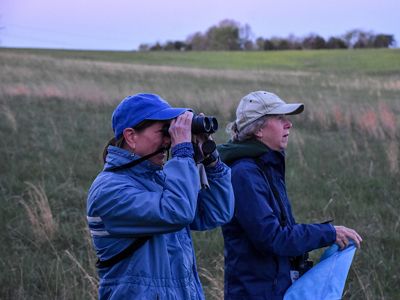
For years, we have welcomed researchers to our preserves to study everything from sustainable grazing to the lives of lizards. Our new Centers for Conservation Innovation (CCI) take our support to another level. The CCI program is a network of TNC properties managed to offer opportunities to research natural systems, test new conservation strategies in a real-world setting and educate the public.
We currently have three centers established across the state:
- Grand River Grasslands CCI: Located at TNC’s Dunn Ranch Prairie in northwest Missouri which includes Little Creek Farm, our sustainable agriculture demonstration farm. Here conservation themes include tallgrass prairie restoration, prescribed fire training, hydrological restoration, sustainable grazing, soil health and biodiversity research.
- Missouri River CCI: Overlooking the Missouri River in Boone County, this center focuses on floodplain and wetland restoration, environmental education, agroforestry, recreation and perennial agriculture, which is the cultivation of crops that live through multiple growing seasons.
- Ozark Woodlands CCI: Near Van Buren in southern Missouri, the site features restoration of characteristic Ozark habitats, prescribed fire training opportunities and the potential for biodiversity and land management research.
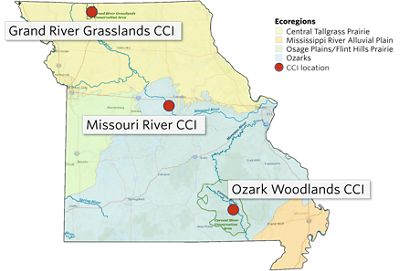
TNC staff are developing individualized plans for each center with input from partners and stakeholders, tailoring the operations to take advantage of opportunities unique to their landscapes and ecosystems.
The model addresses a key barrier in conservation research at a time when Missouri’s wild places need more help than ever. Those places and the opportunities to study them are disappearing.
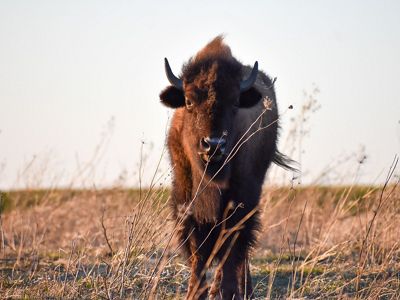
Buffalo Restoration Program
Nearly wiped out by the forces of colonization, buffalo play a vital cultural, material and spiritual role in the lives and history of Native peoples.
Indigenous-led efforts to restore buffalo to Tribal lands have created a roadmap toward healing damage done to tribes, buffalo and the prairies. TNC supports those endeavors, partnering with Indigenous organizations since 2020 to transfer buffalo from TNC preserves to tribal lands.
There are a dozen TNC preserves, including Dunn Ranch Prairie in Missouri, that collectively manage more than 6,000 buffalo. Those herds annually produce an excess of about 1,500 buffalo. TNC’s Indigenous Landscapes & Communities strategy works with Native organizations to transfer more of those buffalo to Native nations.
As a keystone species, buffalo are central to thousands of relationships within the natural landscapes of North America. Plants sprout in their hoofprints. Seeds hitch rides in their fur. And water pools in the wallows left behind by buffalo rolling in the earth, supporting new life.
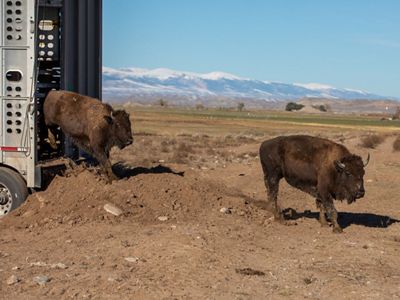
U.S. policies and resulting violence against Native peoples destroyed those connective webs and caused lasting, ongoing harm to Tribes, who have been longtime stewards of the land. Returning the buffalo is a gesture of healing.
In the first three years of the partnership, more than 1,000 buffalo were transferred from TNC preserves, including Dunn Ranch, to Native lands.
Want to Learn More About Our Work in Missouri?
Sign up to receive monthly conservation news and updates from Missouri. Get a preview of Missouri’s Nature News email.
